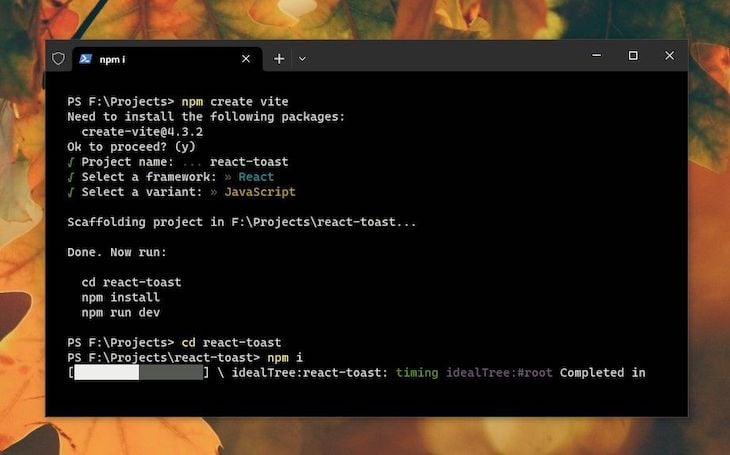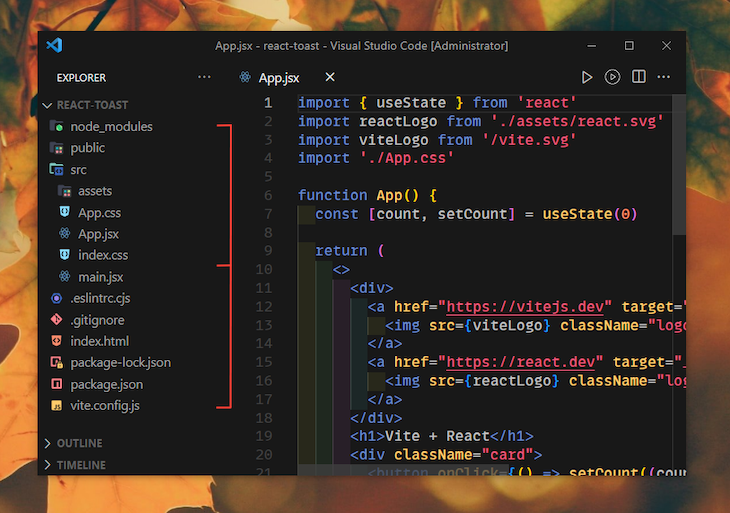
Setting up our React application
Setting up our React application 관련
To demonstrate how to create custom toast components, we must first create a React application. I’ll assume that Node.js is already installed on your computer. Node.js comes with npm, and we’ll use Vite to build our React app.
First, open a terminal, navigate to the location where you want your app folder to be, and type the following command there:
npm create vite
Next, simply follow the Vite instructions: name your project folder, choose React as the framework, and make sure to pick JavaScript as the variant. After the installation finishes, just CD into the project folder and install the required dependencies by typing npm install or npm i:

You can name the project whatever you want. We won’t install any other module inside the project; we’ll simply use the default modules. The default folder structure is as follows:

The src folder is where we’ll do most of our work. Inside src, create a new folder called components. We’ll add our toast and button components to this folder.
In React, you can either use class components, which requires you to extend a React.Component and create a render function that returns a React element, or functional components, which are plain JavaScript functions that accept props and return React elements. We will use functional components throughout this tutorial, which is also recommended by the React team.
Inside the App.js component, you should remove or adjust the existing contents of the JSX according to the project’s needs. The parent element class should be changed to app and include a heading that describes our project. Additionally, we’ll change the function to an arrow function. This is just my personal preference; feel free to use the default function if you prefer:
import React from 'react';
import './App.css';
const App = () => {
return (
<div className="app">
<h1 className="app-title">React Toast Component</h1>
</div>
);
};
export default App;
Next, empty the contents of App.css and leave it blank for now. Similarly, clear the contents of index.css and keep it empty. We will gradually incorporate these styles as we make progress. App.css will contain styles specific to the app layout, while index.css will serve as the global CSS reset.